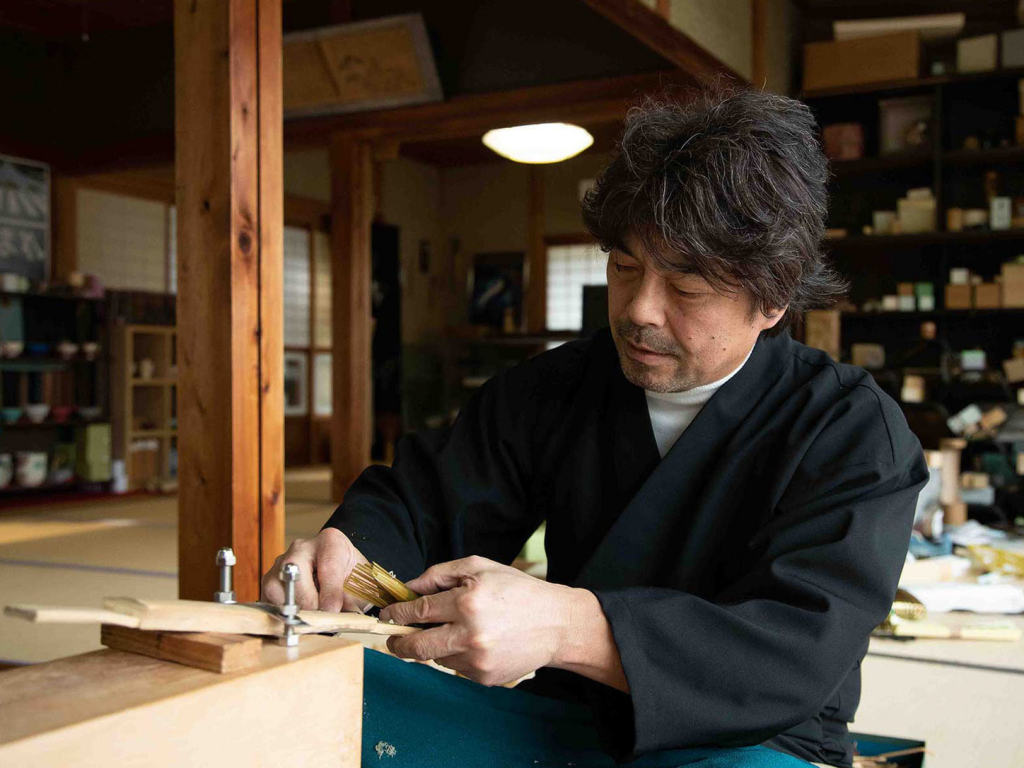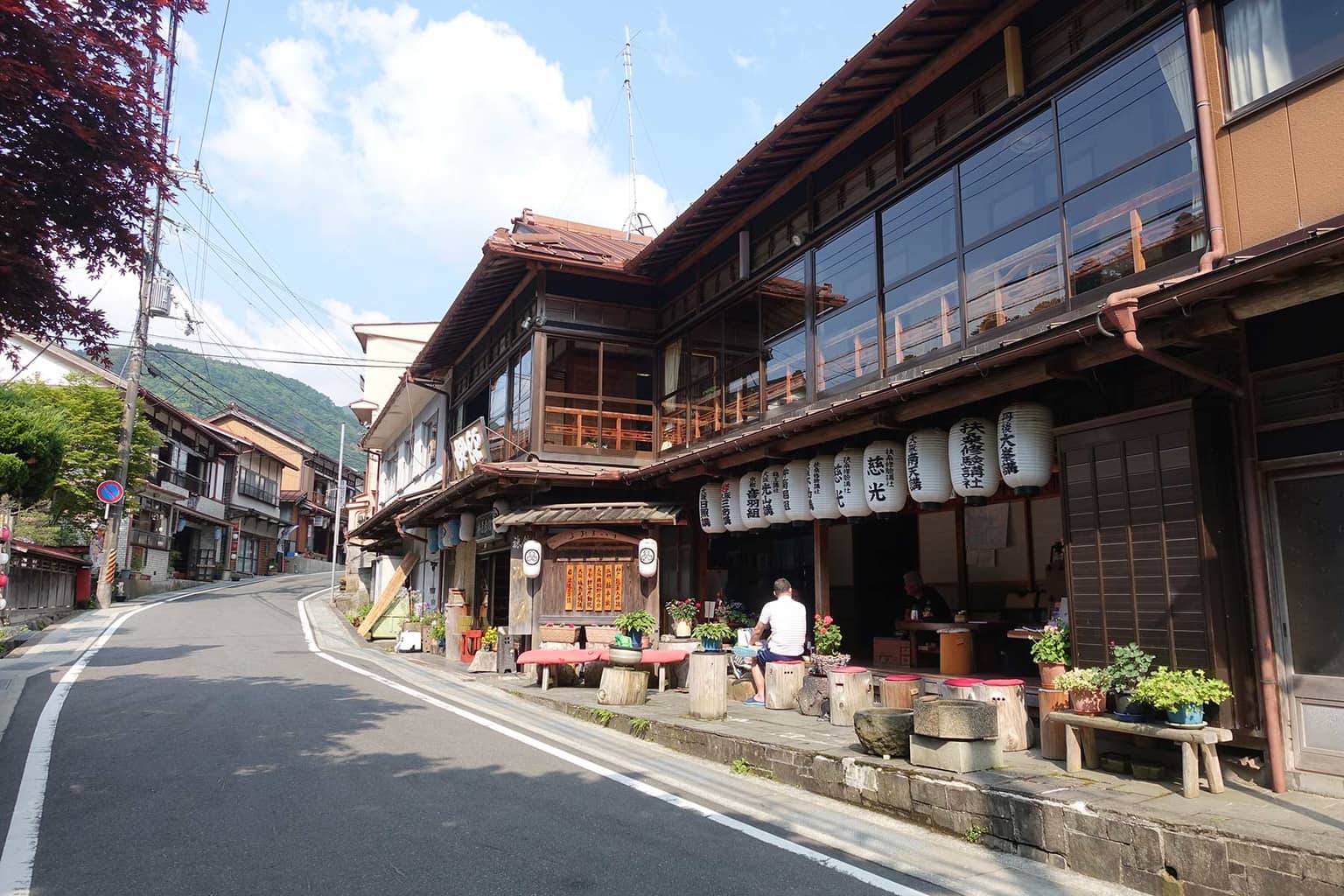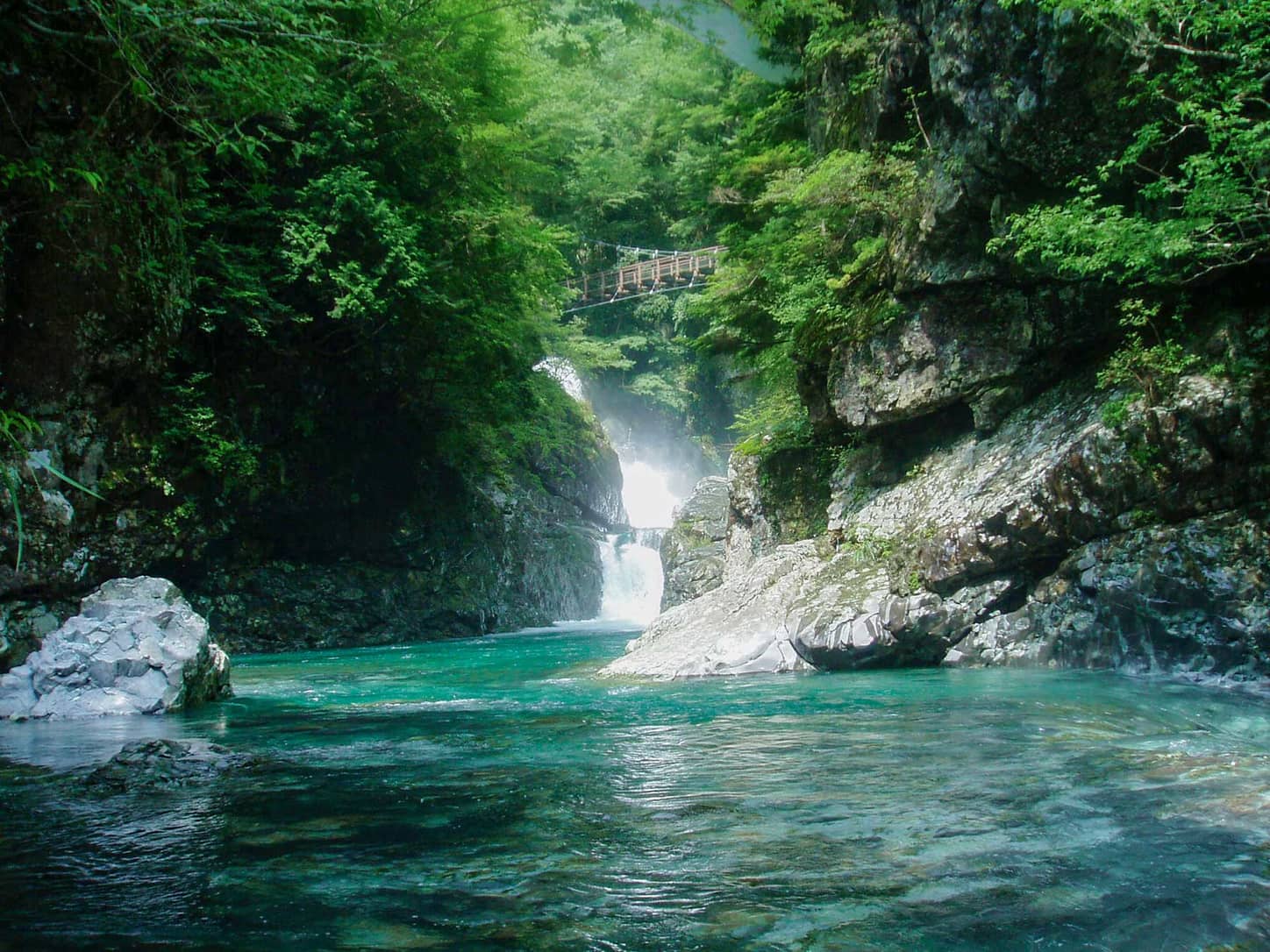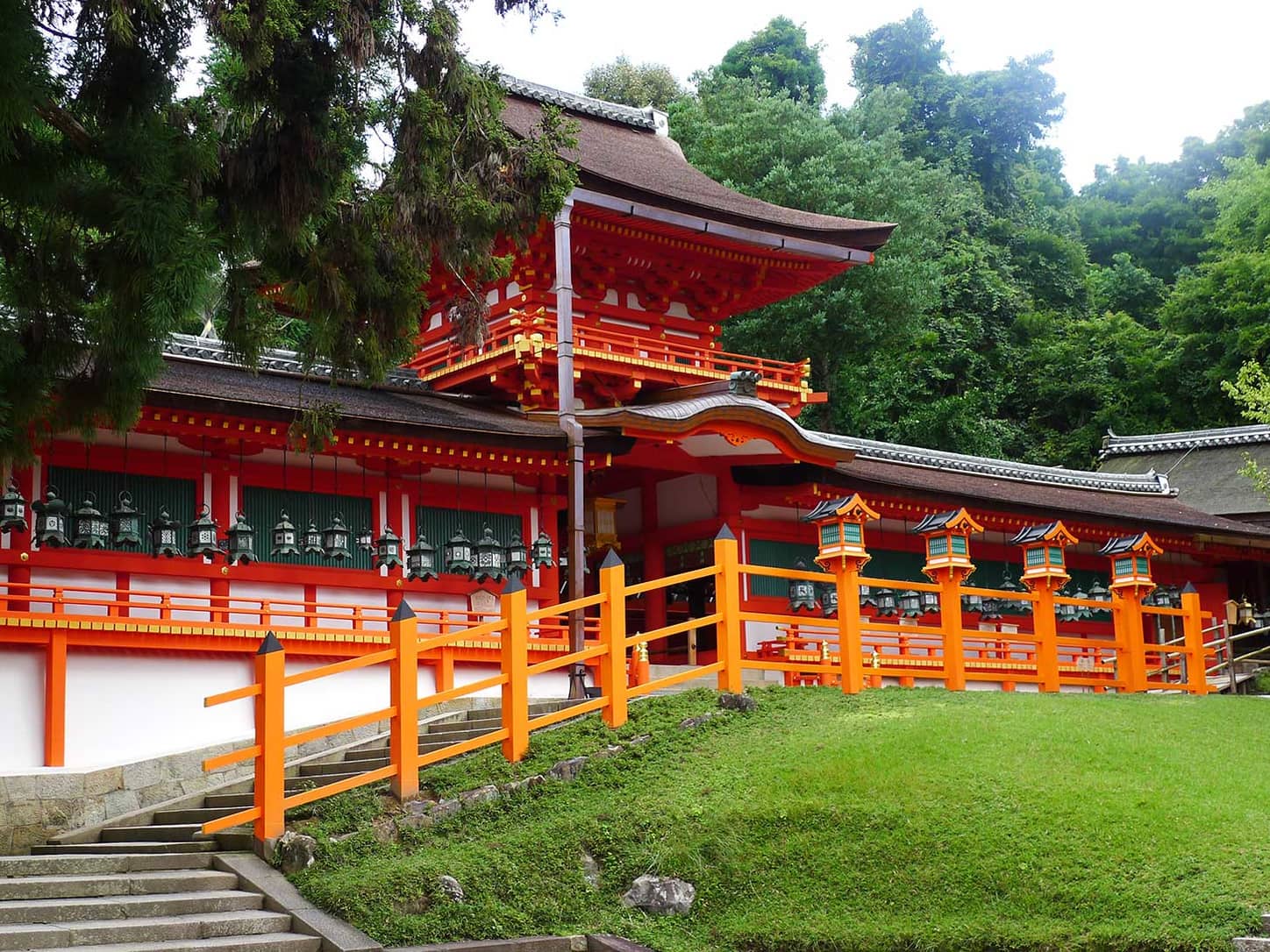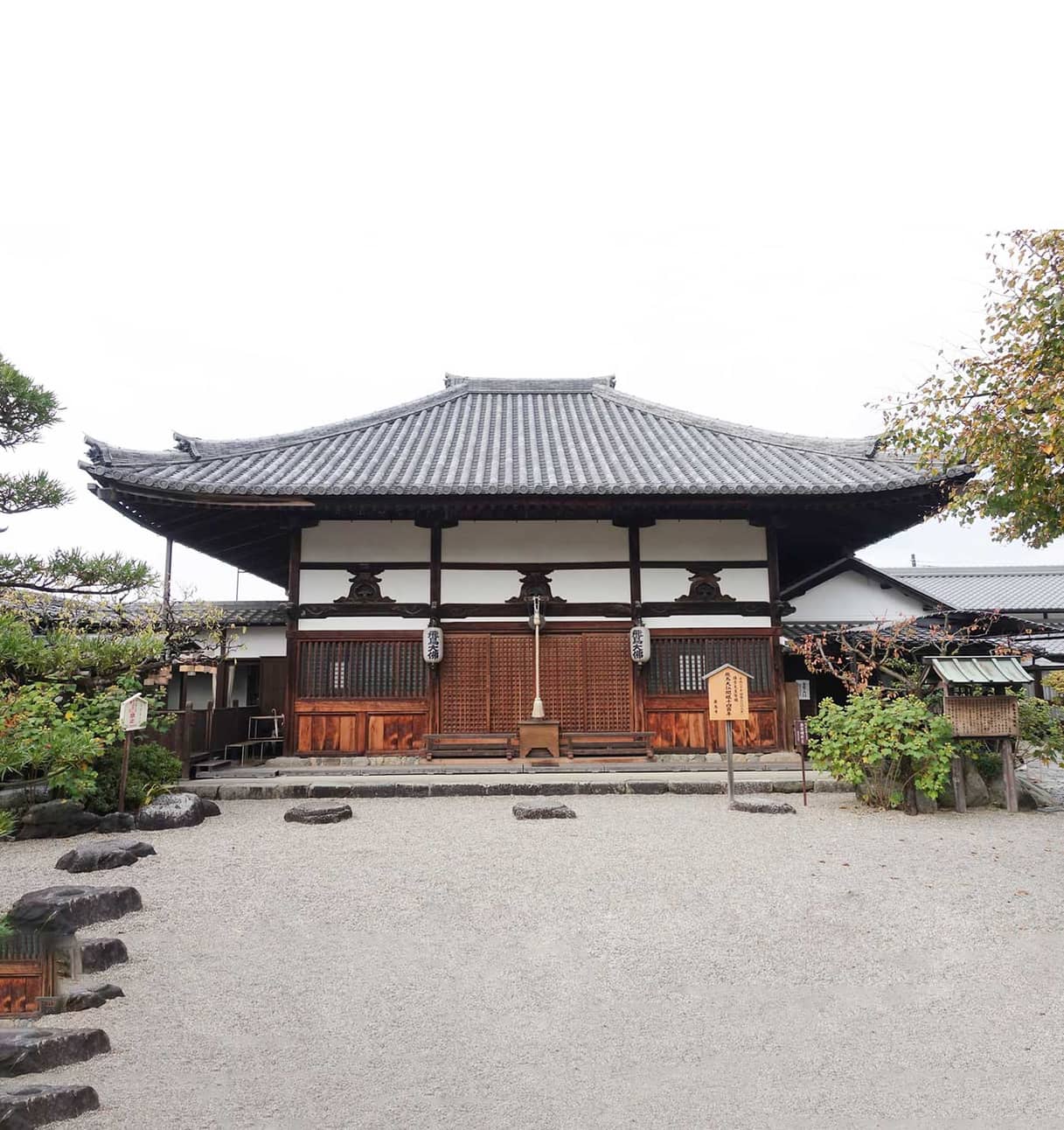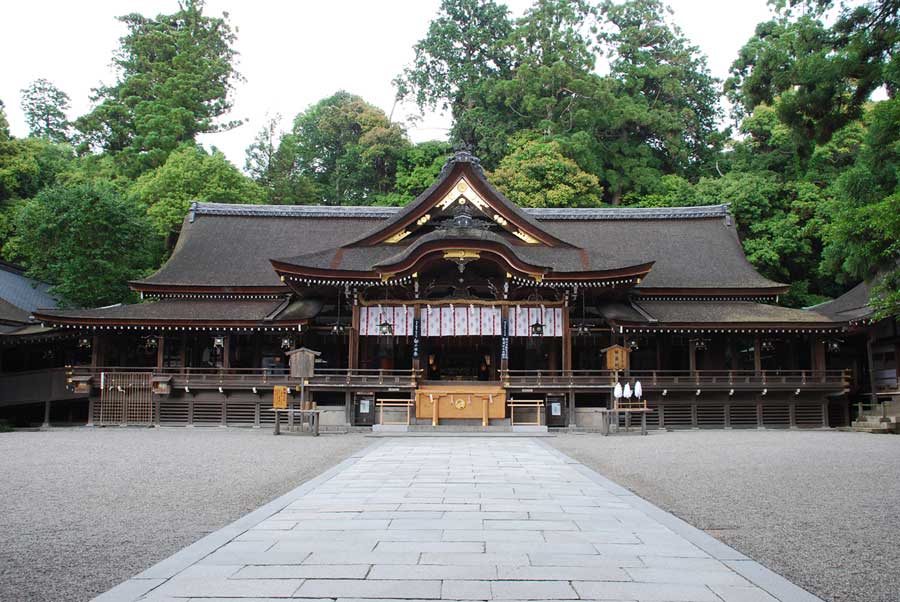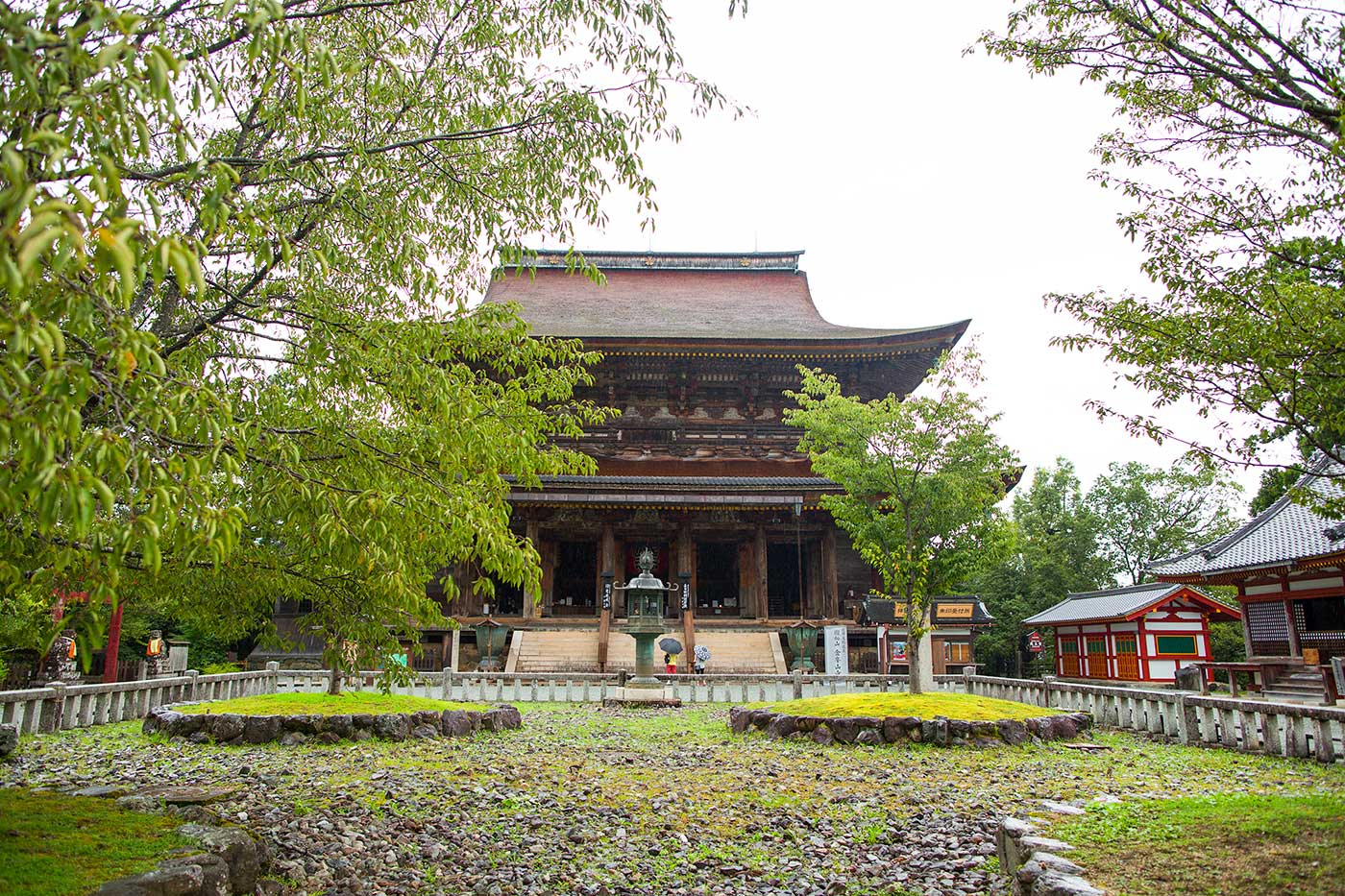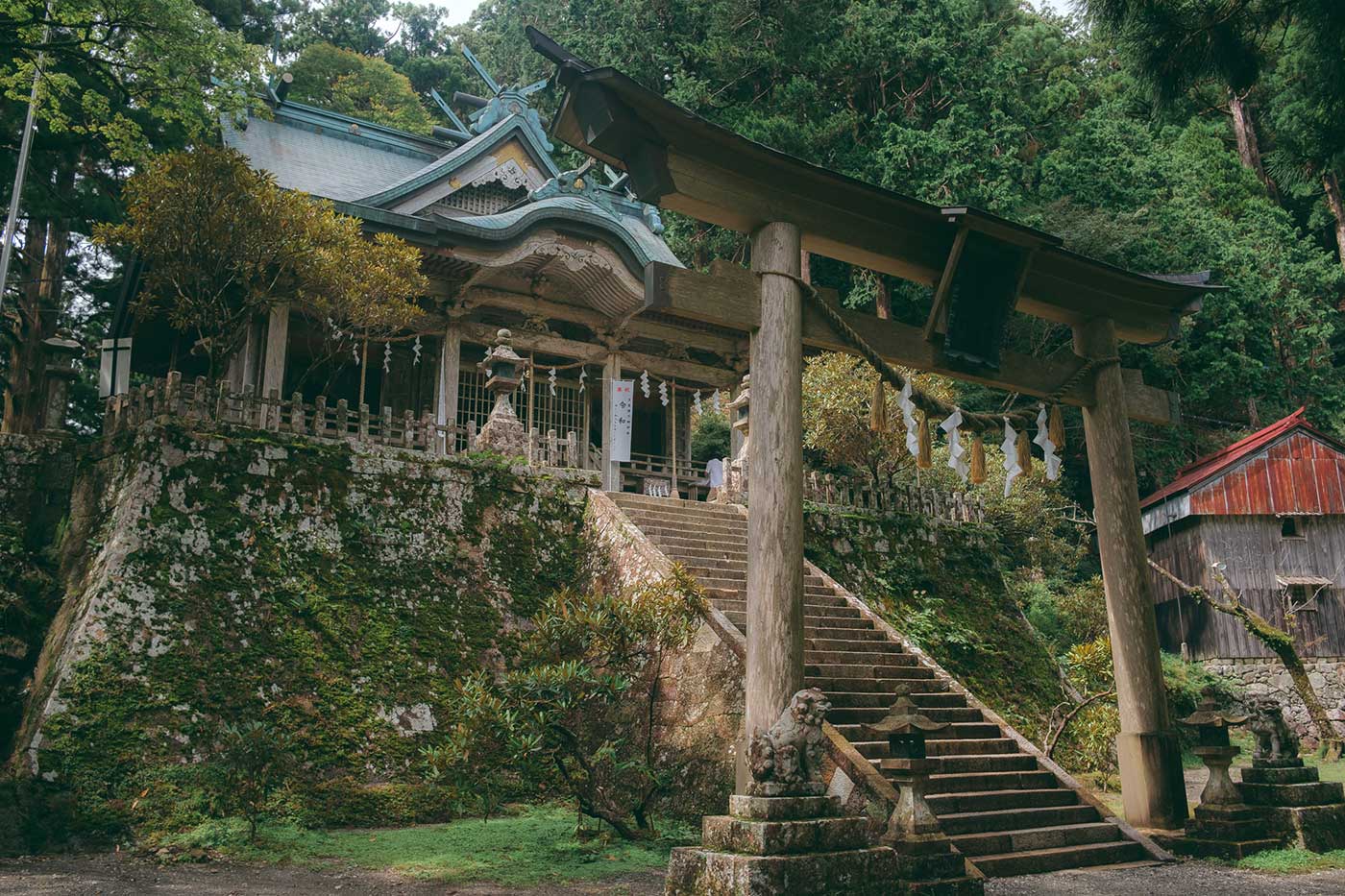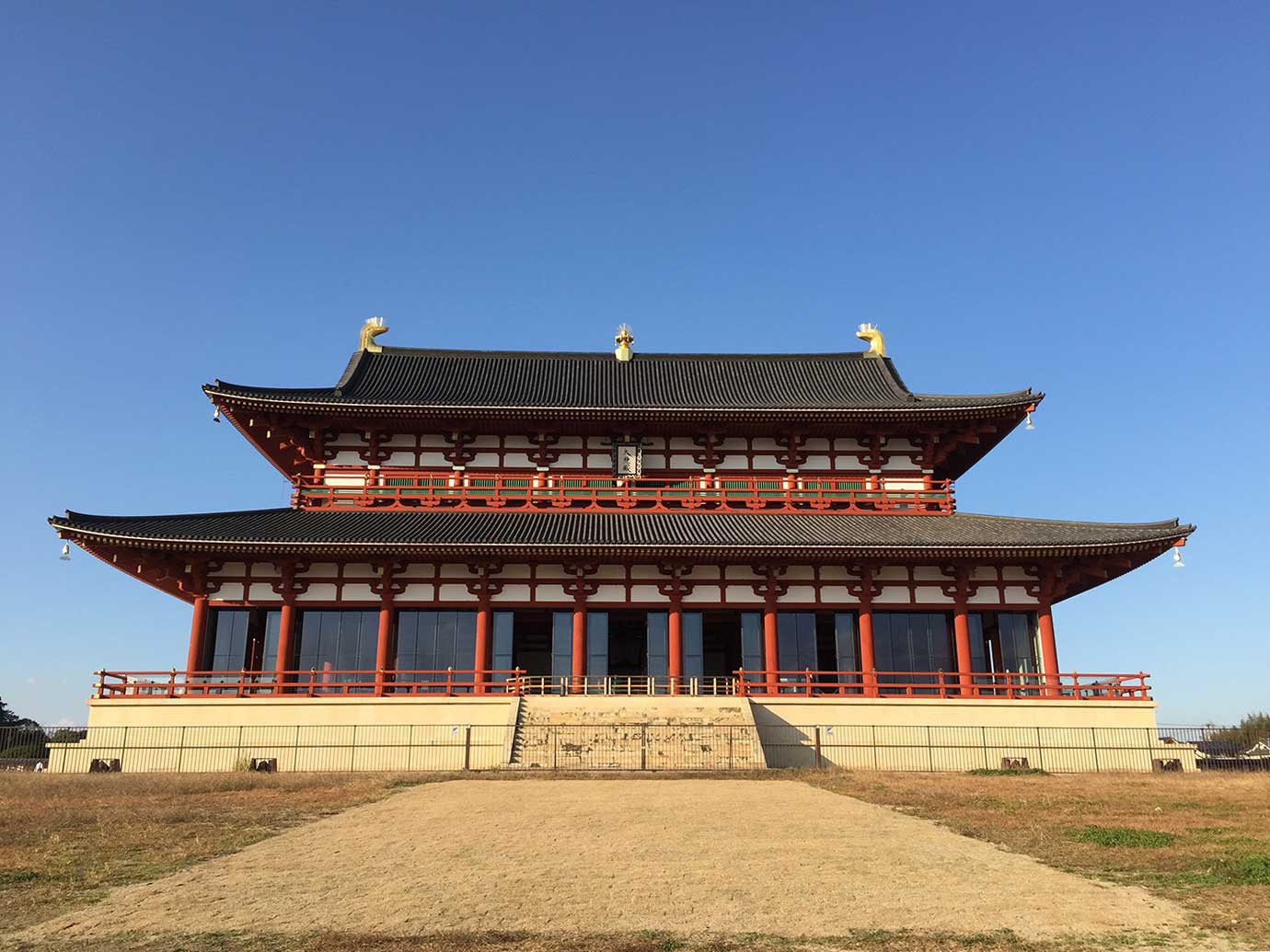Although Nara city – and the prefecture as a whole – is best known for its temples and free-roaming deer, there’s much more to experience in this beautiful region. Here, we give you a complete guide to spending three days touring the area.
Day One: Living History in a Modern City
Though Nara hasn’t been Japan’s capital for more than 1,200 years, hints to its illustrious past are scattered across the city as tradition lives shoulder to shoulder with modern life.
MORNING
Start your first morning right by taking a relaxing stroll through Nara Park and then climbing the winding path to Nigatsudo, one of the many stunning structures in Todaiji Temple’s complex. Here you can enjoy some peace and quiet – when we visited, only a few visitors had made it up to Nigatsudo before noon, despite its proximity to the Great Buddha Hall.
Drink in the view over the city, which reveals how historic buildings are nestled next to their contemporary counterparts. Locals stop by to show their respect to the temple on their way to work or to go on errands, showing how integral shrines and temples are to daily life in Nara even today.
After that early morning walk – invigorating though it is – a well-deserved caffeine boost is on the cards. Head to recently opened Chami, a coffee shop with a difference. The store’s minimalistic modern design fits seamlessly into Nara’s traditional landscape and is run by award-winning latte artist Junichi Yamaguchi and award-winning barista Taka Ishitani. Take your coffee to go, or ascend to the second floor for a bite to eat and some people watching from the window.
Refreshed and ready to hit the streets, it’s time to visit the city’s well-worn sights. Drop by Kohfukuji Temple and its famed five-storied pagoda, or explore the nearby Nara National Museum. From there, it’s a short walk to Higashimuki Shopping Mall, one of Nara’s biggest shopping arcades. This is the perfect place to find a lunch that suits you. While here, stop by Mafu Okai, an accessory shop that specializes in traditional hemp products.
Nigatsudo
How much: Free admission
Where: 406-1 Nigatsudo, Zoshi-cho, Nara city
More info: www.todaiji.or.jp/english/map05.html
Kohfukuji Temple
How much: Eastern Golden Hall, ¥300; Kohfukuji National Treasure Hall, ¥700
Where: 48 Noboriojicho, Nara city
More info: www.kohfukuji.com/english/
Higashimuki Shopping Mall
Where: 15 Higashimuki Nakamachi, Nara city
More info: higashimuki.jp/index_en.html
Chami
Where: 6-2 Tsunofurishinya-cho, Nara city
More info: chami.jp
Mafu Okai
Where: 16 Higashimuki Nakamachi, Nara city (on Higashimuki Shopping Mall)
More info: mafu-okai.com/shop
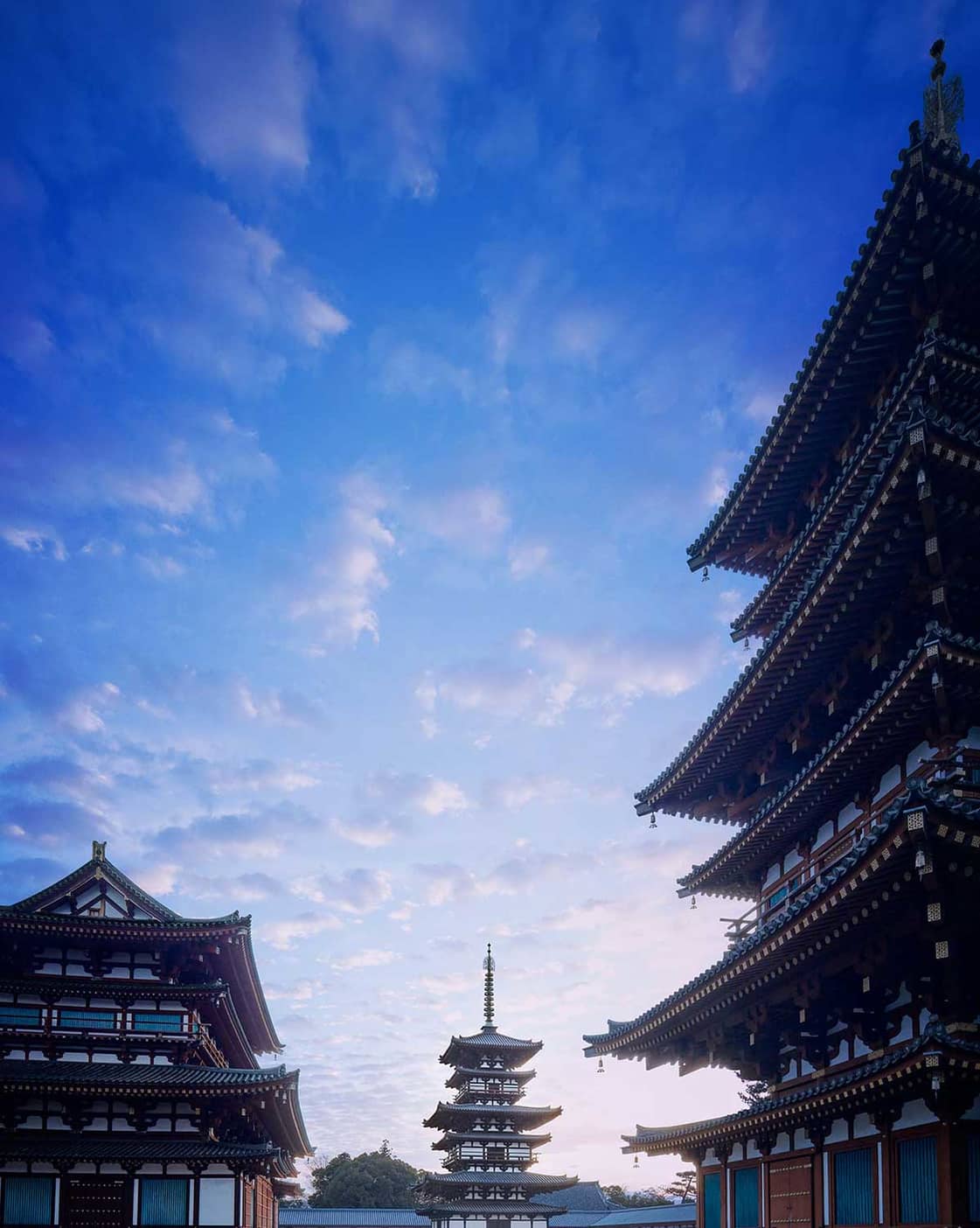
Photo by Yuichi Nakatsu
EVENING
End the day’s sightseeing at one of Japan’s most famous temples, Yakushiji Temple. This extensive complex has much to offer and deserves a couple of hours to explore fully. First founded around 1,300 years ago when Emperor Tenmu ordered its construction to pray for his consort’s recovery from illness (spoiler alert – it worked and she later outlived him, becoming Empress Jito), the temple is still extremely important today.
Yakushiji Temple’s elegant East Pagoda is the only building in the complex to survive over a millennium of earthquakes and fires. The lone-surviving tower underwent a renovation – including dismantling – starting in 2009 and scheduled for completion in March 2021.
It’s getting close to dinner time, so you might want to check out Nara city’s exciting food scene. There are almost endless options, but for a hearty meal make your way to the charming Amanojyaku JR Nara Store. This ramen restaurant – run by a fashionable couple – combines contemporary music and design with classic Japanese soul food. Be ready for the hints of yuzu in the broth, a flavorful innovation that heightens the taste.
For after-dinner drinks look no further than the exclusive Lamp Bar, which serves original, handcrafted cocktails in a decadent old-fashioned milieu. Finally, if you’re staying at Fufu Nara, a traditional dinner is included in the rate so you could opt for a relaxed, delicious meal at this secluded oasis in the heart of the city.
Yakushiji Temple
How much: Admission fee, ¥800-¥1,100; Special seasonal pass, ¥1,600
Where: 457 Nishinokyo-cho, Nara city
More info: yakushiji.or.jp/en/
Amanojyaku JR Nara
Where: 35-1 Surugamachi, Nara city
More info: profile.ameba.jp/ameba/amanojyaku-nara
Lamp Bar
Cover charge: ¥500
Where: 1F Iseya Bldg, 26 Tsunofuri-cho, Nara city
More info: hyperurl.co/lampbar
Fufu Nara
Where: 1184-1 Takabatake-cho, Nara city
More info: fufunara.jp/en/
Day Two: Get Close to Nature
Nara Prefecture is more than its capital, so it pays to leave the city limits and immerse in the region’s untouched nature.
MORNING
Start the morning with a tour of Menfudo Limestone Cave – the largest of its kind in Kansai. Be sure to take the quaint monorail up to catch a stunning panoramic view of the surrounding mountains. Afterwards, stroll through historic hot spring town Dorogawa Onsen. Depending on the season, it may be good to have your own packed lunch with you. If you’ve timed it right, dine at Seikuro, a popular soba restaurant in the area.
Menfudo Limestone Cave
How much: Admission fee, ¥450; monorail (round-trip), ¥500
Where: 673-89 Dorogawa, Tenkawa-mura, Yoshino-gun
More info: vill.tenkawa.nara.jp/tourism/spot/cavern
Dorogawa Onsen
Where: 13-1 Dorogawa, Tenkawa-mura, Yoshino-gun
More info: visitnara.jp/destinations/area/dorogawa
Seikuro
Where: 525-1 Dorogawa, Tenkawa-mura, Yoshino-gun
More info: hyperurl.co/seikuro_nara
EVENING
After lunch, it’s time for an afternoon hike through Mitarai Valley’s untouched natural scenery. It takes about two hours from Dorogawa Onsen through the valley to central Tenkawa village. If you have time and inclination, head further south to Tenkawa Daibenzaiten-sha Shrine, one of Japan’s largest shrines dedicated to Benzaiten, the goddess of literature, music and other things that flow – including the rivers nearby.
Pray for a boost in luck and creativity, and then settle down for the night at Misenkan, a quiet inn by the river. Here you can enjoy a substantial meal of local fare and a much-needed soak in the open-air bath, before drifting off to sleep to the gentle sound of the babbling brook outside.
Mitarai Valley
Where: 263-1 Kawai, Tenkawa-mura, Yoshino-gun (Tenkawa Tourism Office)
More info: vill.tenkawa.nara.jp/tourism/spot/mitarai
Tenkawa Daibenzaiten-sha Shrine
Where: 107 Tsubonouchi, Tenkawa-mura, Yoshino-gun
More info: tenkawa-jinja.or.jp
Misenkan
Where: 267 Kawai, Tenkawa-mura, Yoshino-gun
More info: misenkan.com
Day Three: Nara’s Crafts and Traditions
Dig deeper into the fascinating world of Nara’s crafts and traditions (and maybe find some handcrafted souvenirs along the way).
MORNING
After a refreshing day in the outdoors, it’s time to zip back through Nara city and into Takayama, an area that has a 500-year history of making bamboo whisks for tea ceremony. Take a tour of 20th generation chasen artisan Tango Tanimura’s studio (pictured top) to witness firsthand the painstaking effort and skill required to make these delicate yet strong bamboo whisks. Tanimura also holds workshops. Reservations are required for both tours and experiences.
If experiencing an actual tea ceremony is more your bag, head instead to Taiseian in Horyuji to learn the art of tea from Kiyoko Gamo, who is proficient in both English and the way of tea. She will guide you through the correct way to make and drink matcha in a traditional 200-year-old teahouse near Horyuji Temple, one of Japan’s oldest Buddhist temples.
Tanimura Tango
Where: 5964 Takayama-cho, Ikoma city
More info: tango-tanimura.com
Taiseian
Where: 2-1-6 Horyuji, Ikagura-cho, Ikoma-gun
More info: web1.kcn.jp/taiseian
EVENING
Return to Nara city for lunch and dine on a luxurious feast of Nara heirloom vegetables served in traditional fashion at Awa Naramachi. The restaurant is housed inside a 140-year-old machiya home that has been renovated with care. Awa Naramachi’s exclusive course menus require reservations in advance, so for those who can’t grab a spot, head to its sister store Coto Coto for similar fare in a more casual setting.
To learn more about Nara’s long tradition of craftsmanship, stop by nearby Nara Crafts Museum. Not only does this facility display a variety of historical items, there are works by local artists available for purchase. Further west, Nakagawa Masashichi Shoten Nara Tsutaya Books also offers a curated selection of handcrafted items by skilled artisans. (Look out for Nakagawa Masashichi Shoten Nara’s brand-new store branch opening in Ganriin-cho in spring 2021.) Before heading home, be sure to stop by the be-all and end-all of Nara-sourced spirits and brews, Momotaro JR Nara Vierra Store.
Awa Naramachi
Where: 1 Shonami-cho, Nara city
More info: kiyosumi.jp/naramachiten
Coto Coto
Where: 1F Nara City Naramachi Center, 38 Higashi Terabayashi-cho, Nara city
More info: cotocoto.nara.jp
Nara Crafts Museum
How much: Free admission
Where: 1-1 Azemame-cho, Nara city
More info: azemame.web.fc2.com
Nakagawa Masashichi Shoten Nara Tsutaya Books
Where: 1F Tsutaya Books Nara Store, 1-691-1 Sanjo-oji, Nara city
More info: nakagawa-masashichi.jp/staffblog/store/s164004/
Nakagawa Masashichi Shoten Nara
Where: 22 Ganriin-cho, Nara city
More info: www.nakagawa-masashichi.jp/
Momotaro JR Vierra Nara Store
Where: JR Nara Station, 2F Vierra Nara, 1-1 Sanjo-hommachi, Nara city
More info: nara-momo.com/tenpo.html
Must-See Temples, Shrines and Historical Sites in Nara
Japan’s ancient capital is filled with historical monuments, each with its own significance and unique heritage. Dig deep into Nara’s history at any of these six locations to discover how they remain important today.
Kasugataisha Shrine
Surrounded by primeval forests, this vermilion-lacquered shrine’s 3,000 donated lanterns add a magical mood to its grounds.
Admission fee: Free (inner area: ¥500)
Where: 160 Kasuganocho, Nara city
More info: kasugataisha.or.jp/about/index_en.html
Asukadera Temple
Said to be the oldest full-scale temple in Japan, Asukadera was founded in 588 and boasts the nation’s oldest image of Buddha.
Admission fee: ¥350
Where: 682 Asukamura, Asuka, Takaichi-gun
More info: visitnara.jp/venues/A00522
Omiwa Jinja Shrine
Believed to be Japan’s oldest existing Shinto shrine, its main enshrined god is said to have created Japan. He descended here at Mt Miwa.
Admission fee: Free
Where: 1422 Miwa, Sakurai city
More info: oomiwa.or.jp/english/
Kinpusenji Temple
This is Yoshino’s leading temple and an important place of pilgrimage for Shugendo mountain ascetics.
Admission fee: ¥500 (¥1,000 for special Buddhist statue viewing)
Where: Yoshinoyama, Yoshino-cho, Yoshino-gun
More info: kinpusen.or.jp
Tamaki Jinja Shrine
Often shrouded in mist, this ancient shrine is one of the sacred points on the Omine-Okugake Trail.
Admission fee: Free
Where: 1 Tamaigawa, Totsukawa-mura, Yoshino-gun
More info: tamakijinja.or.jp
Heijo Palace Site
The Heijo Palace Site covers an extensive area – a testament to how powerful and prosperous the ancient capital was. Today, visitors and locals alike enjoy exploring its many structures and surroundings.
Admission fee: Free
Where: 3-5-1 Nijo Oji-minami, Nara city
More info: heijo-park.go.jp/en/
How to Get to Nara
From Osaka
Osaka Station 50 min (Yamatoji Rapid Service) -> JR Nara Station
Osaka Namba Station 40 min (Kintetsu Nara Line) -> Kintetsu Nara Station
JR Shin-Osaka Station 60 min (Osaka-Higashi Line) -> JR Nara Station
From Kyoto
Kyoto Station 45 min (JR Rapid Express) -> JR Nara Station
Kyoto Station 35 min (Kintetsu Limited Express) -> Kintetsu Nara Station
Times are approximate
Top photograph by Allan Abani
Sponsored Post

